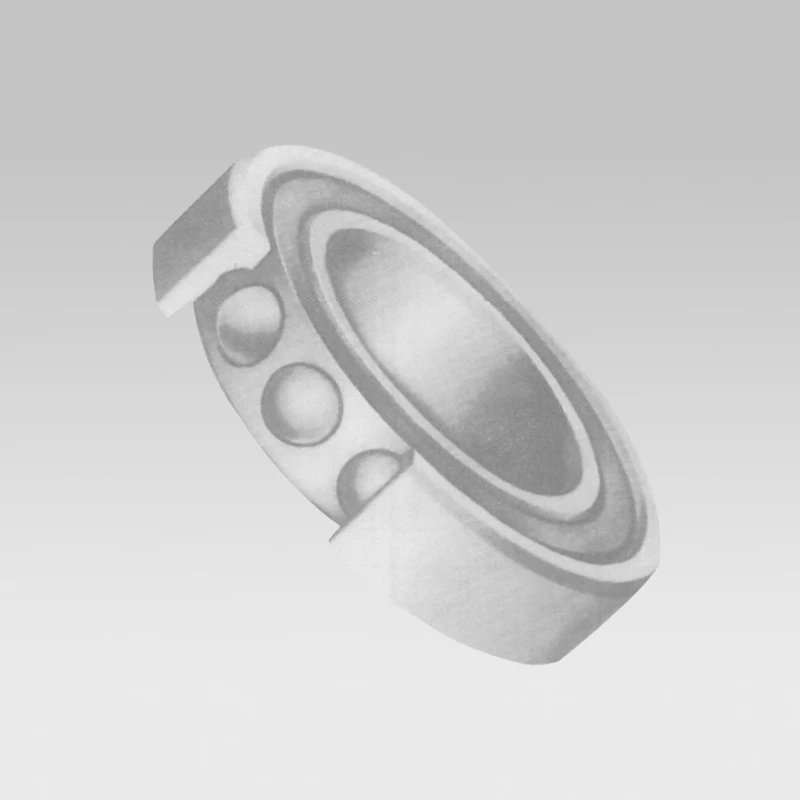
Nov . 12, 2024 14:18 Back to list
types of cylindrical roller bearings
Types of Cylindrical Roller Bearings
Cylindrical roller bearings are a crucial component in various mechanical applications, known for their ability to handle heavy radial loads and moderate thrust loads. Their design features cylindrical rollers, which offer a larger contact area that improves load distribution. This article will delve into the different types of cylindrical roller bearings, their applications, and specific advantages each type offers.
1. Single Row Cylindrical Roller Bearings
The most common type, single-row cylindrical roller bearings, comprises a single row of cylindrical rollers. These bearings support radial loads and are particularly adept at handling high-speed operations. The design permits easy mounting and dismounting, making them popular in industrial machinery and automotive applications.
The roller’s geometry and arrangement maximize contact with the raceway, leading to improved load capacity. Single-row cylindrical roller bearings are suitable for applications like electric motors, gearboxes, and machine tools where space efficiency is a priority.
2. Double Row Cylindrical Roller Bearings
Double-row cylindrical roller bearings consist of two rows of rollers, which substantially increases their load-carrying capacity. This design provides greater stiffness and resistance to axial loads. They are ideal for heavy machinery and equipment that require robust support, such as in conveying systems, industrial gearboxes, or cranes.
Due to their enhanced capacity to accommodate misalignment and radial loads, these bearings prove to be advantageous in industries where downtime is costly, and reliability is paramount.
3. Multi-row Cylindrical Roller Bearings
These bearings contain three or more rows of rollers and are designed for very high radial loads
. Multi-row cylindrical roller bearings are extensively used in applications like rolling mills, where they must endure the rigorous demands of heavy loads and shock loading.Their design allows for distributed load, which lessens wear and tear on each individual roller. This type of bearing is favored in industries that require enduring stability and durability under extreme conditions.
types of cylindrical roller bearings

4. Cylindrical Roller Bearings with Nonsymmetric Raceways
This variation consists of cylindrical roller bearings designed with different profile shapes for the inner and outer raceways. The unique design mitigates the tendency for the rollers to tilt, allowing for more uniform load distribution. These bearings are particularly useful when dealing with oscillating motions, common in agricultural machinery and construction equipment.
5. Cylindrical Roller Bearings with Seals or Shields
Cylindrical roller bearings with seals or shields offer a significant advantage by protecting internal components from contaminants such as dust and moisture. This is critical for prolonging the life of the bearing and maintaining performance in dirty or challenging environments. These types of bearings are commonly used in automotive engines and agricultural machinery, where exposure to harsh conditions is frequent.
6. Flanged Cylindrical Roller Bearings
Flanged cylindrical roller bearings feature one or more flanges that help with axial positioning and prevent lateral movement. This design is beneficial in applications where axial load carrying capacity is necessary alongside radial load support. These bearings can be found in various applications, from construction to home appliances, emphasizing versatility.
Advantages of Cylindrical Roller Bearings
- Higher Load Capacity The design of cylindrical roller bearings permits a larger number of rollers compared to ball bearings, resulting in greater load capacity. - Improved Durability With the larger contact area, cylindrical roller bearings typically exhibit longer life cycles, reducing maintenance and replacement costs.
- Efficiency at High Speeds Their design allows them to perform efficiently at high rotational speeds, especially in applications requiring less friction and heat generation.
In summary, cylindrical roller bearings are vital components across various industries, offering specific advantages based on their design and configuration. From supporting heavy machinery to ensuring precision in automotive applications, understanding the different types of cylindrical roller bearings can lead to improved performance and durability in engineering solutions. Whether opting for single-row, double-row, or specialized types, the choice of bearing ultimately shapes the reliability and efficiency of the machinery in which it is used.
Latest news
-
Premium Deep Groove Ball Bearings | High Speed & Reliability
NewsAug.29,2025
-
Durable Scaffolding Clamps - Secure & Reliable Tube Connectors
NewsAug.28,2025
-
Common Failures in Thrust Ball Bearings and Solutions
NewsAug.22,2025
-
How Tapered Roller Bearings Can Take Shock Loads
NewsAug.22,2025
-
Angular Bearings in High-Precision Spindles
NewsAug.22,2025
-
The Impact of Misalignment on Cylindrical Roller Bearing Performance
NewsAug.22,2025
